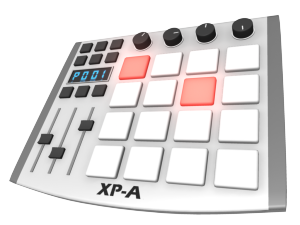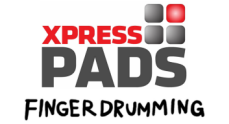A couple of years ago I purchased a pad controller. I bought it because I was sick of spending hours searching my MIDI drum loop libraries for grooves that would fit my compositions. If I couldn’t find a suitable groove, I usually tried to create the desired beat with numerous mouse clicks in the piano roll. This was neither effective nor fun. Frequently, after minutes of searching and tweaking, I had forgotten the groove idea in my head that was waiting to be transferred into my digital audio workstation (DAW). Because it took me so long to create the right groove, I tended to use duplicates of that groove in various parts of the song with only a few adjustments that were limited by my knowledge. I always felt a bit embarrassed about my drum tracks and was constantly explaining to listeners that the drum tracks were not yet final.
After enough of this frustration, I decided to enhance my drum production skills by using a pad controller, a physical instrument-like device. I expected to have some good drum results from playing with the standard setup where all sixteen pads are mapped to a different drum set sound.

Although I tried very hard, I never managed to get a satisfactory playing response. In fact, my playing was still not much better or more effective than when I was placing tiny drum notes into the piano roll of my sequencer with the mouse or searching through my drum loop libraries. And it still wasn’t fun.
For three years my pad controller rested in a drawer until I decided to sell some equipment. I held the device in my hands and was very close to selling it, but then I decided to give it one final chance. And this time I tried a different approach.
First, I analyzed my previous problems with the device. The biggest obstacle was the traditional drum sound assignment layout. By this, I mean the typical way that different drum instruments are assigned to a “16 pads” pad controller. My brain could not easily relate to this visual structure, and had difficulty recognizing visual patterns. Even worse, the fingerings were ergonomically difficult to play with, with my fingers always seeming to get in the way of one another. The result was that it was too much work for my brain to create even the most simple drum grooves.
It was this longtime frustration, coupled with the stymie of my musical potential that led me to develop what I now call the XpressPads finger drumming technique. This technique resolves all of these obstacles that hindered me – and probably you, too – from playing convincing drum grooves and fills on the pad controller.
